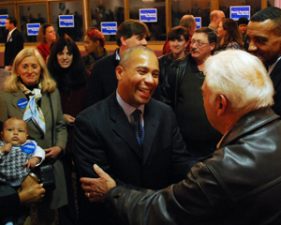 From the Hebrew Hannukah to Peak Whale Oil, Brian uncovers an illuminating story of how our lighting is becoming more efficient.
From the Hebrew Hannukah to Peak Whale Oil, Brian uncovers an illuminating story of how our lighting is becoming more efficient.
Each December as nights grow long, people of the Jewish faith celebrate an ancient miracle of efficiency. In our oil-soaked, electrified age it is difficult to understand what it meant for the Maccabees to enjoy eight days of light from one day’s supply of oil. This miracle of Chanukah allowed restoration of their temple in accordance with Talmudic law which requires that only pure olive oil from the first of three pressings of each of three harvests should beaten for the light of a menorah. Exodus 27 also commands that the tabernacle lamp should burn continuously. The Maccabees temple restoration took place in Jerusalem in the second century BCE, but it was by no means the only example of a cherished light. Aladdin finds his magic within a dusty lamp. The Christian Bible tells us that Jesus is the light of the world and that he told his followers that it is foolish to hide their lamps at their feet.
Eternal lights also appear throughout history, from Zoroastrian divine sparks to the eternal flame at the temple of Delphi. In his novel Moby Dick, Herman Melville referenced a 16th century English voyager’s description of a Turkish Mosque, built in honor of Yunas (Jonah). The Mosque contained a marvelous lamp which consumed no oil. But until very recently, all practical lamps were based upon the principle of incandescence, they burned something to produced light and eventually consumed that substance. At first they burned animal fat or olive oil. Kerosene lamps first appeared in ninth century Baghdad in Al-Razi’s Kitab al-Asrar (Book of Secrets). This lamp sparked the world’s first petroleum industry and began a 2000-year-old quest for a more efficient lamp.
The Second Oil Peak

Elsewhere the next thousand years would bring only gradual refinements to the prehistoric oil lamp. By the 1700s, whale oil became the biofuel of choice because it produced a steady smokeless light.
Theoretically this was a renewable resource, but utilization patterns were not sustainable. Whale harvesting far outstripped the rate of replenishment so that the peak whale harvest curve resembled the Hubbert curve for a non-renewable resource. According to History of the American Whale Fishery from its earliest inception to the year 1876 by Alexander Starbuck, annual whale oil production peaked in 1845 at about eighteen million gallons.
By the time Herman Melville published Moby Dick in 1851, the easy whale oil was gone. Whalers who had once prospered in local waters now roamed the far corners of the earth in order to eke out a living, much as modern petroleum workers must now toil aboard deepwater rigs and in the high arctic. Moby Dick’s narrator Ishmael warns:
“For God’s sake, be economical with your lamps and candles. Not a gallon you burn, but at least one drop of man’s blood was spilled for it.”
During peak whale oil, as many as 10,000 right whales were killed each year but by the end of the nineteenth century it is estimated that less than 30 female right whales existed and to this day the northern right whale has yet to recover beyond 300 individuals. The lights of the industrial age relied upon a rapidly declining resource. We needed another miracle.
All We Need is a Miracle

In 1854 a Canadian named Abraham Gesner expanded his oil-shale kerosene company into the United States. A man named David Melville introduced gas lights to some industrial and street lighting applications, but a factory explosion in 1859 damped enthusiasm for bringing these dangerous and smelly lamps into our homes. The kerosene lamps used in Baghdad 1000 years earlier finally became popular in the west. Kerosene was also smelly and dangerous but camphene, a cleaner-burning alternative fuel, was taxed out of the market because it contained drinkable alcohol.
Thomas Edison’s incandescent electric light was a brilliant idea which grew out of necessity. For the next century pop culture would represent such ideas with light bulbs floating over inventor’s heads. But Edison himself once said that inventions are 1% inspiration, 99% perspiration. As with the Baghdad lamps, inspiration didn’t always guarantee universal progress.
Several types of electric lights had been invented in the decades before Edison’s more famous breakthrough. Humphry Davy demonstrated a brighter electric light in 1806. A.E. Becquerel invented fluorescent lights in 1867, and Canadians Henry Woodward and Mathew Evans patented the carbon thread light in 1874. Edison purchased this patent and refined it into a relatively efficient and long-lived electric lamp in 1879. He also developed the infrastructure necessary to make electric lighting commercially successful. Edison was the Steve Jobs of his time, perfecting and promoting existing technology into products which captured the public imagination.
For God’s Sake, Be Economical With Your Lamps!
Luminous efficacy is a measure of how much light the human eye perceives for each watt of energy input. The efficacy of Edison’s first electric bulb was 1.4 lm/W, a 200% improvement over the theoretical maximum of 0.65lm/W for kerosene lamps. What is more, Edison’s bulb could be powered by the clean hydroelectric power of Niagara Falls or, if powered by fossil fuels, the power plant could be located far away from consumers.
Oil lamps had brought smoke, smell and soot into homes along with their light. But users of electric lights were isolated from the air pollution and other negative effects of their electricity consumption. Users can’t see these negative impacts when they perform a cost/benefit analysis against the immediate and obvious utility and convenience of electric lights. The same is true for the electric power company. Until an electric company’s generating capacity is exceeded, each watt sold contributes to profits regardless of whether that watt maximized total net societal benefit.
Edison lights did use far less oil than their predecessors, but they still wasted 95% of their energy as heat. They were thermodynamically inefficient but they were perceived to be socially efficient because the negative effects were hidden. Units of energy consumption (incandescent equivalent) watts became the standard unit for brightness rather than the more direct, utility-focused units of candelas or lumens. So if someone had invented a 15 watt electric light bulb in the 1960s, consumers would only assume that it wasn’t very bright. Ishmael’s message of sustainability “For God’s sake, be economical with your lamps!” would fall on deaf ears for the next century and a half.
Winners and Losers
Edison’s electric light was a perfect fit for the industrial age. It allowed factories to produce products day and night without reliance on dangerous and dim gas and oil lamps. Extra capacity from the electrical generating infrastructure would soon be used to run machinery in factories as well as electric lights. But this new invention provided virtually no advantage to rural Americans. This is because, until the 1930s electricity could only be efficiently transmitted about four miles from the power plant. So cities enjoyed the benefits of this new invention while rural areas were stuck in the kerosene age. The US government tried to compensate for this differential affluence with the Rural Electrification Act (REA) of 1936, but a global imbalance in electricity access persists even to this day.
Peak Deja-vous
As we approach another Hubbert peak at the end of the third oil age, and coal’s previously hidden negative effects are revealing themselves globally, we can no longer afford to throw away 95% of our lighting energy. This is forcing us to reassess our cost/benefit analysis of incandescent lighting.
Once again we look for a miracle. And once again the miracle was found in an existing technology. The florescent lights pioneered by A.E. Becquerel in 1867 had been refined and miniaturized into compact fluorescent (CF) lights which could produce three to five times the light per watt of a typical Edison incandescent light bulb. Light Emitting Diodes (LED) and Electron Stimulated Luminescence (ESL) lights are also competing to replace the Edison bulb. These technologies already have luminous efficacies of more than ten times the best Edison incandescents and they could provide the equivalent of almost six-months light from one day’s supply of lamp oil.
But it can take generations for a new technology to work its way around the globe. Wealthy nations are trying to force upgrades by banning incandescent lights. People who live in poorer regions might not be aware of the alternatives. So billions of Edison bulbs continue to waste energy in parts of the world where few can afford to waste anything.
India’s Lighting a Billion Lives campaign (LaBL) campaign estimates that 2.2 billion liters of kerosene are burned for lighting each year, most to serve the 1.3 Billion people who don’t yet have access to electricity. So as northern nights grow long, some of us will celebrate a time of abundance in food, material goods, electricity and light.
But we must remember that technological breakthroughs don’t come out of the lab and immediately solve intractable problems. We are on the verge of a third oil peak and face a growing threat of catastrophic climate change. All we need is a miracle.
Whale fishing, facsimile of a woodcut “Cosmographie Universelle”, 1574. Public domain via wikimedia


